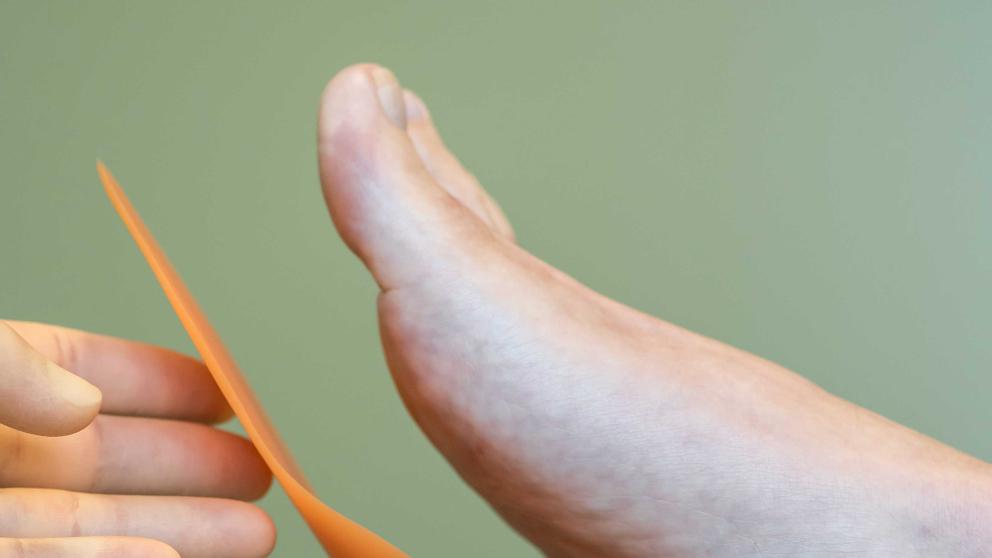New device to help diabetics avoid dangerous foot ulcers

Research is underway on a device which could help warn people with diabetes if they are at risk of developing dangerous foot ulcers that lead to amputation.
The LOMIS (LOad Monitoring and Intervention System to prevent diabetic foot ulceration) project is a 3-year project funded by the National Institute for Health and Care Research (NIHR), the research partner of the NHS. The consortium involved in the Invention for innovation (i4i) grant includes the University of Southampton who led technical development, the University of Salford which is leading the clinical investigation and Bangor University who will conduct an initial health economics assessment.
The research team from the University of Salford is testing the LOMIS device, which is worn inside the person’s shoe to help compensate for the loss of sensation due to nerve damage on the sole of the foot caused by diabetes.
LOMIS was designed following a user centred approach at the University of Southampton. LOMIS monitors compression (pressure) and forwards and backwards rubbing forces (shear) under the feet as people walk. Monitoring the 3D pattern of pressure and shear in real time over hours and days allows LOMIS to detect early warning signs which can support the user to reduce dangerous pressures by changes in their movement, physical activity and posture.
Dr Daniel Parker, Lecturer in Digital Health at the University of Salford, and lead for the clinical study said: “We are excited to be working with colleagues at Southampton and clinicians in Manchester alongside members of the public to bring this new safety device to patients. This will help us understand how the feet of people with diabetes are exposed to harmful forces, allowing us to better identify when and how we can prevent this.”
The first phase of tests will take place in the Salford laboratory and as people walk around campus to simulate daily activities, walking at different speeds, on slopes, whilst turning and climbing stairs. This will help the team understand whether these activities pose a risk of ulceration more than walking alone, something we don’t yet know.
Users will then take the device home allowing researchers to build up a picture of how an individual’s activity and foot health change over time, helping to define safe limits for pressures under the foot.
Prof Liudi Jiang, Chief Investigator for LOMIS, from the University of Southampton, said: “Over 3.3 million people in the UK have diabetes and there are over 60,000 people with diabetic foot ulcers in England at any given time, and 160 related amputations happen every week. Diabetes foot ulcer-related care costs around £1.13 billion every year but around 80 percent of these ulcers could be preventable. Our work so far has been to create a monitoring system that makes prevention possible.”
The project team has obtained medical device regulatory approval from the Medicines and Healthcare products Regulatory Agency (MHRA) and ethics approval from the Health Research Authority (HRA) for the LOMIS clinical investigation and are soon to open the study within the North Manchester Diabetes Centre (part of Manchester University Foundation NHS Trust).
Details about the project can be found on LOMIS.
For all press office enquiries please email communications@salford.ac.uk.
Share:
